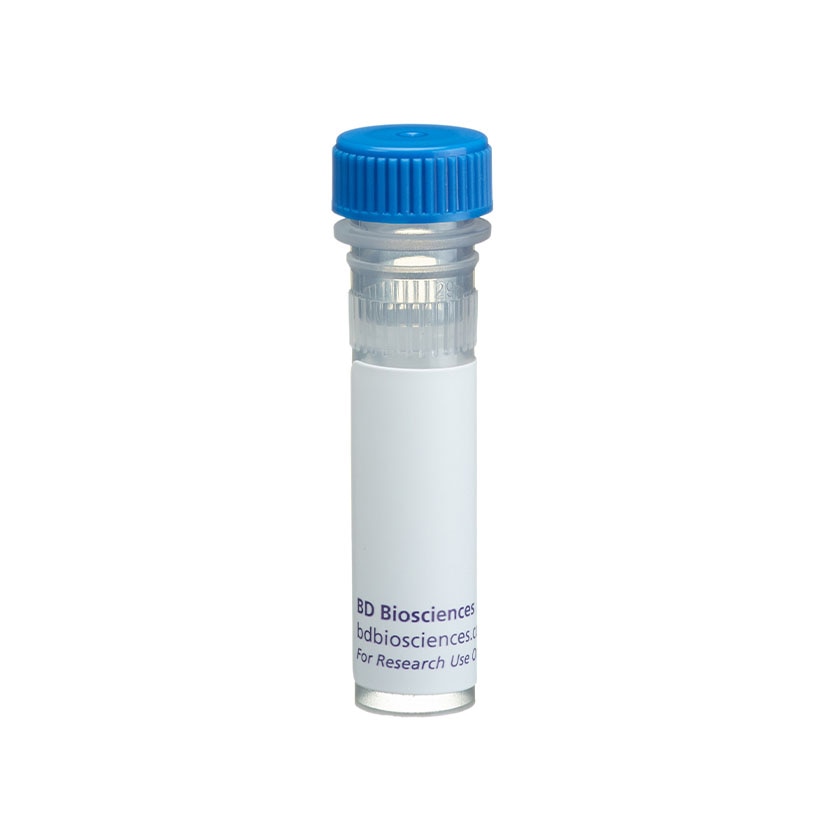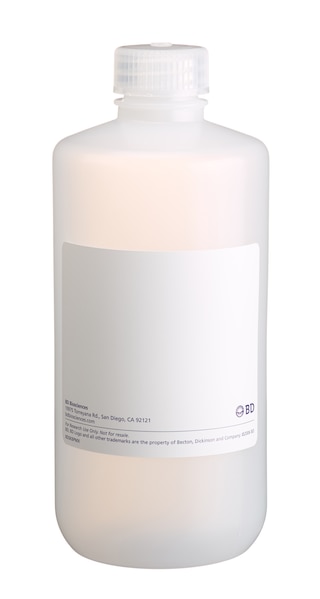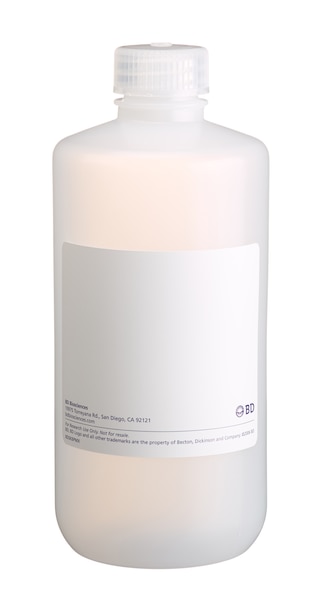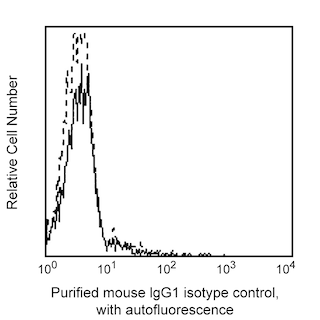Old Browser
Looks like you're visiting us from {countryName}.
Would you like to stay on the current country site or be switched to your country?




Flow cytometric analysis of CD137 ligand expression on Hut-78 cell line. Hut-78 cells were stained with either Purified Mouse Anti-Human CD137 Ligand (Cat. No. 559445; solid line histogram) or Purified Mouse IgG1, κ Isotype Control (Cat. No. 555746; dashed line histogram), then FITC Goat Anti-Mouse IgG/IgM (Cat. No. 555988). Fluorescence histograms depicting CD137 ligand (or Ig isotype control) expression were derived from gated events with the forward and side light-scatter characteristics of viable cells.


BD Pharmingen™ Purified Mouse Anti-Human CD137 Ligand

Regulatory Status Legend
Any use of products other than the permitted use without the express written authorization of Becton, Dickinson and Company is strictly prohibited.
Preparation And Storage
Product Notices
- Since applications vary, each investigator should titrate the reagent to obtain optimal results.
- Caution: Sodium azide yields highly toxic hydrazoic acid under acidic conditions. Dilute azide compounds in running water before discarding to avoid accumulation of potentially explosive deposits in plumbing.
- An isotype control should be used at the same concentration as the antibody of interest.
- Sodium azide is a reversible inhibitor of oxidative metabolism; therefore, antibody preparations containing this preservative agent must not be used in cell cultures nor injected into animals. Sodium azide may be removed by washing stained cells or plate-bound antibody or dialyzing soluble antibody in sodium azide-free buffer. Since endotoxin may also affect the results of functional studies, we recommend the NA/LE (No Azide/Low Endotoxin) antibody format, if available, for in vitro and in vivo use.
- Please refer to www.bdbiosciences.com/us/s/resources for technical protocols.
Companion Products



.png?imwidth=320)
The C65-485 monoclonal antibody specifically recognizes the type II membrane protein known as 4-1BB Ligand (4-1BB-L) or CD137 Ligand (CD137L). This molecule belongs to the TNF superfamily and is encoded by TNFSF9 (Tumor necrosis factor superfamily member 9). CD137 Ligand has been reported to have costimulatory function on activated T cells. Reports suggest that stimulation of activated T cells via CD137 Ligand does not require the presence of other costimulatory molecules, including CD28. Some studies have reported human CD137 Ligand to be expressed preferentially on primary B cells and B-cell lines. The C65-485 antibody is able to react with recombinant human 4-1BB Ligand (rh4-1BB-L/CD137L) bound to CD137 (4-1BB receptor) expressed on phytohemagglutinin (PHA)-stimulated PBMC.
Development References (4)
-
Chu NR, DeBenedette MA, Stiernholm BJ, Barber BH, Watts TH. Role of IL-12 and 4-1BB ligand in cytokine production by CD28+ and CD28- T cells. J Immunol. 1997; 158(7):3081-3089. (Biology). View Reference
-
DeBenedette MA, Shahinian A, Mak TW, Watts TH. Costimulation of CD28- T lymphocytes by 4-1BB ligand. J Immunol. 1997; 158(2):551-559. (Biology). View Reference
-
Melero I, Bach N, Hellström KE, Aruffo A, Mittler RS, Chen L. Amplification of tumor immunity by gene transfer of the co-stimulatory 4-1BB ligand: synergy with the CD28 co-stimulatory pathway. Eur J Immunol. 1998; 28(3):1116-1121. (Biology). View Reference
-
Zhou Z, Kim S, Hurtado J, et al. Characterization of human homologue of 4-1BB and its ligand. Immunol Lett. 1995; 45(1-2):67-73. (Biology). View Reference
Please refer to Support Documents for Quality Certificates
Global - Refer to manufacturer's instructions for use and related User Manuals and Technical data sheets before using this products as described
Comparisons, where applicable, are made against older BD Technology, manual methods or are general performance claims. Comparisons are not made against non-BD technologies, unless otherwise noted.
For Research Use Only. Not for use in diagnostic or therapeutic procedures.
Refer to manufacturer's instructions for use and related User Manuals and Technical Data Sheets before using this product as described.
Comparisons, where applicable, are made against older BD technology, manual methods or are general performance claims. Comparisons are not made against non-BD technologies, unless otherwise noted.
Report a Site Issue
This form is intended to help us improve our website experience. For other support, please visit our Contact Us page.